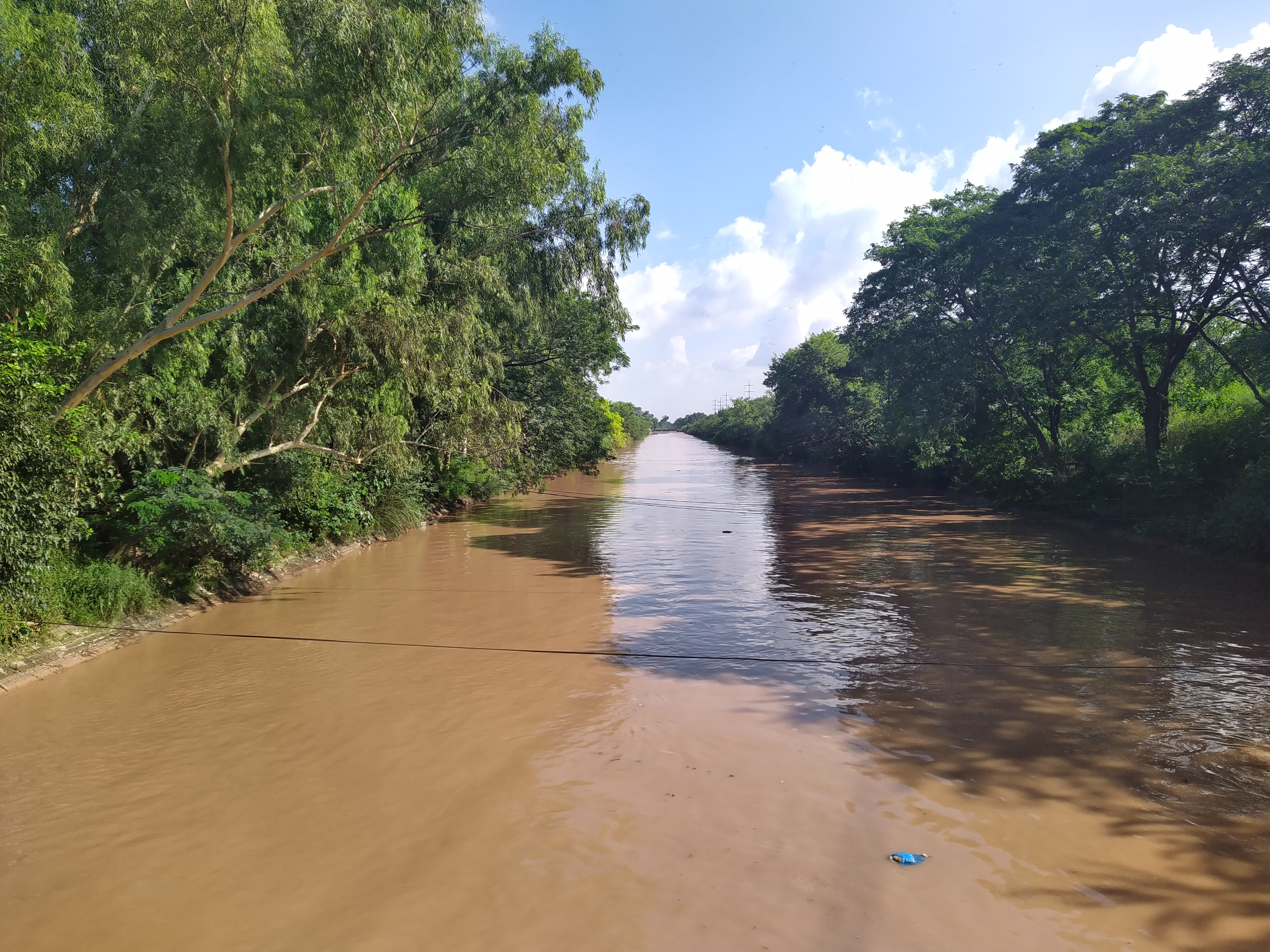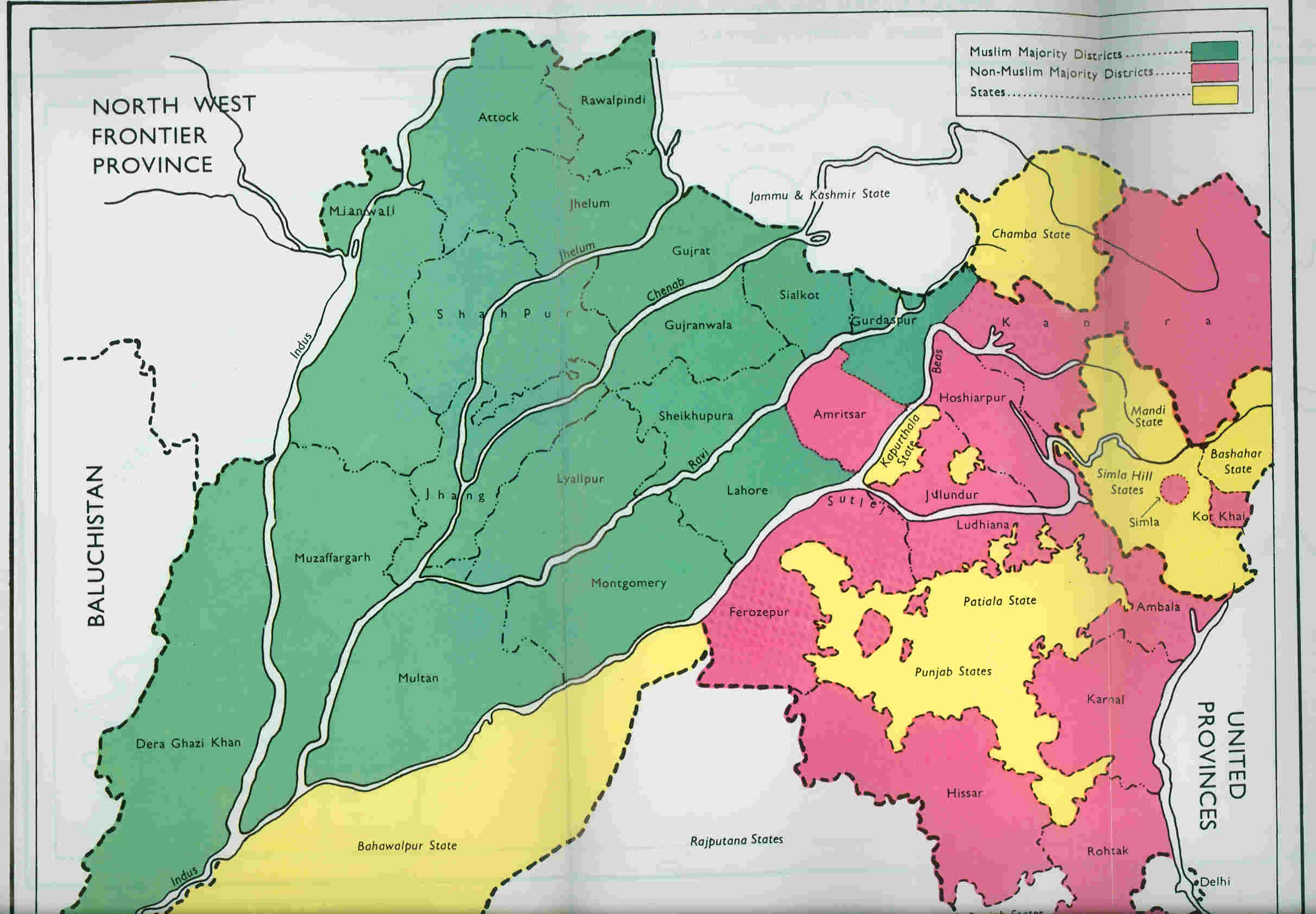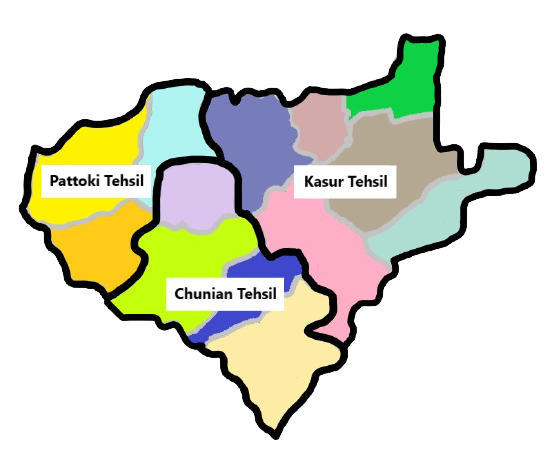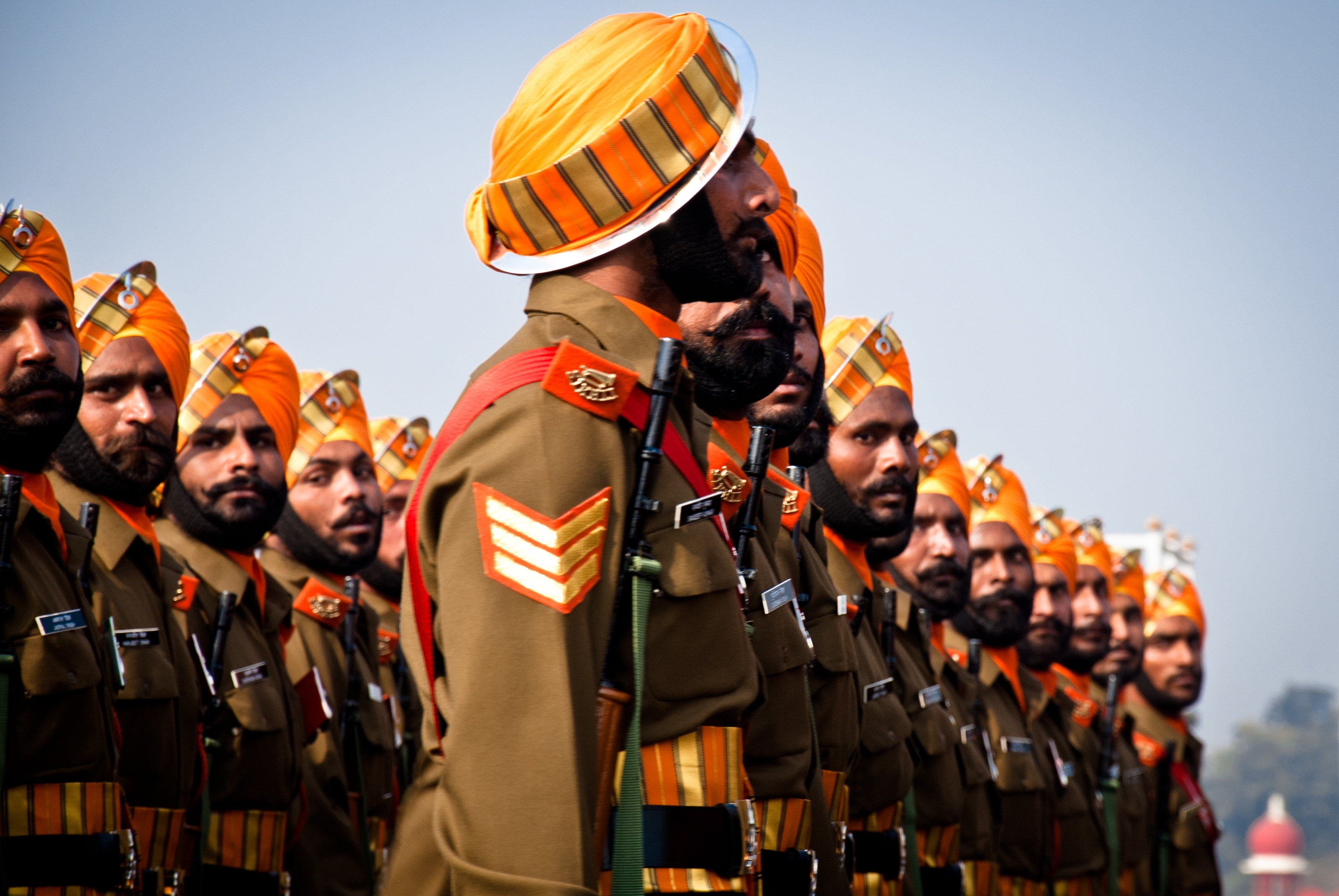|
Bedian
Bedian (), also spelled Badian, is a village in the Kasur District of Punjab, Pakistan, close to the India-Pakistan border. The village was founded by the Sikh preacher Baba Sahib Singh Bedi during the region of Maharaja Ranjit Singh. After the partition of India, Pakistan built the Bambawali-Ravi-Bedian Canal (BRB Canal), bringing waters from the Chenab River to the Upper Bari Doab Canal, as a replacement for the canal waters lost to the Indian Punjab. Etymology The name ''Bedian'' derives from the Bedi clan of Khatris. The clan which founded and populated this village before Partition of India. History The village was first settled by the descendants of Baba Deva Singh Bedi, a descendant of Guru Nanak. Bedi was a contemporary of Maharaja Ranjit Singh and put ''tilak'' on the Maharaja's forehead during his coronation. The Maharaja is said to have allotted the land of the village to Bedi and his descendantsHaroon KhalidTo escape Partition violence in Lahore, these Hindus ... [...More Info...] [...Related Items...] OR: [Wikipedia] [Google] [Baidu] |
Bambawali-Ravi-Bedian Canal
__NOTOC__ Bambanwala-Ravi-Bedian Canal (BRB Canal), also called Ichogil Canal, is a manmade waterway in Pakistan that takes off from the Upper Chenab Canal near the Bambanwala village (to the west of Daska), runs southeast until reaching close to the India-Pakistan border and then runs south parallel to the border. It ends at the Sutlej near Kanganpur 100 km south of Lahore. It is the source of the Lahore Canal which runs westwards to the city of Lahore. History The canal was built by the citizens of Lahore in 1948 in response to an appeal by the Chief Minister of Punjab Iftikhar Hussein to safeguard the city from a possible Indian invasion in the future. As a result, common Pakistani nationals dug the whole 8km canal free of cost in a few days. Indo-Pakistani War of 1965 During the Indo-Pakistani War of 1965, the Pakistani army blew up all except eight bridges crossing the canal and held back the invading Indian forces until the ceasefire was announced. However, Indian ... [...More Info...] [...Related Items...] OR: [Wikipedia] [Google] [Baidu] |
Upper Bari Doab Canal
Madhopur Headworks is a barrage on the Ravi River, just 14km from Pathankot city in Pathankot district in the Indian state of Punjab. It is located on the border with Jammu and Kashmir. The Upper Bari Doab Canal (UBDC) off-taking from Madhopur irrigates agricultural lands in Punjab and provides water to the cities of Pathankot, Gurdaspur, Batala and Amritsar. The headworks was one of the first irrigation projects constructed in Punjab during the British Raj, within 10 years of the conquest of Punjab. It irrigated lands in the Gurdaspur, Amritsar and Lahore districts of the undivided Punjab. During the partition arrangements, Cyrill Radcliffe allocated three tehsils of Gurdaspur district to India in part to maintain the integrity of the canal system from Madhopur. After independence, India signed the Indus Waters Treaty with India obtaining the exclusive use of waters from the Ravi River. Subsequently, India rebuilt the Madhopur headwork as a full barrage. Pakistan continues to ... [...More Info...] [...Related Items...] OR: [Wikipedia] [Google] [Baidu] |
Kasur District
Kasur District ( Punjabi and ur, , translit=Zilā Qasūr), is a district located in Lahore Division of Punjab, Pakistan. It came into existence on 1 July 1976. Prior to its creation, it was a tehsil of the Lahore District. The district capital is Kasur city, the birth city of the Sufi poet Bulleh Shah, who is well known in that region as well as in the whole of Pakistan. The total area of the district is 4,796 square kilometres. History In ancient time, Kasur was known for its education and fish. The history of Kasur is more than 1,000 years. Kasur region was agricultural region with forests during the Indus Valley civilization. The Vedic period is characterized by Indo-Aryan culture that migrated from Central Asia and settled in Punjab region. The Kambojas, Daradas, Kaikayas, Pauravas, Yaudheyas, Malavas and Kurus migrated, settled and ruled ancient Punjab region. After overrunning the Achaemenid Empire in 331 BCE, Alexander marched into present-day Punjab region with an a ... [...More Info...] [...Related Items...] OR: [Wikipedia] [Google] [Baidu] |
2017 Census Of Pakistan
The 2017 Census of Pakistan was a detailed enumeration of the Pakistani population which began on 15 March 2017 and ended on 25 May 2017. It was the first census taken in the country in the 21st century, nineteen years after 1998 Census of Pakistan, the previous one in 1998, and it was carried out by the Pakistan Bureau of Statistics. The census recorded a total population throughout the country of 213,222,917. The results showed a massive population increase having occurred between 1998 and 2017 of 77.0 Million people, or an increase of +56.5%. The results also marked a significant overperformance compared to estimations made of the Pakistani population before the census, which had previously estimated the Pakistani population in 2017 to be 195 Million – 200 Million. Design The 2017 Census of Pakistan was conducted by over 110,000 civilian staff along with security provided by over 200,000 personnel from the Army of Pakistan. Its budget was 18.5 Billion Pakistani Rupees, of ... [...More Info...] [...Related Items...] OR: [Wikipedia] [Google] [Baidu] |
Bedi Clan
Khatri is a caste system in India, caste of the South Asia, Indian subcontinent that is predominantly found in India, but also in Pakistan and Afghanistan. In the subcontinent, they were mostly engaged in mercantilistic professions such as banking and trade, they were the dominant commerical & financial administration class of Late-Medieval India some in Punjab often belonged to hereditary agriculturalist land-holding lineages, others were engaged in artisanal occupations such as silk production and weaving while some were scribes learned in Sanskrit and Persian language, Persian too During the British colonial era, they also served as lawyers and engaged in administrative jobs in the colonial bureaucracy. Some of them served in the British Indian Army, British Indian army after being raised as Sikhs. The Sikhism, Sikh religion was founded by Guru Nanak, a Bedi Khatri. Subequently, all the Sikh religious leaders or Gurus were Khatris. During the Sikh Empire, many Khatris f ... [...More Info...] [...Related Items...] OR: [Wikipedia] [Google] [Baidu] |
Lahore
Lahore ( ; pnb, ; ur, ) is the second most populous city in Pakistan after Karachi and 26th most populous city in the world, with a population of over 13 million. It is the capital of the province of Punjab where it is the largest city. Lahore is one of Pakistan's major industrial and economic hubs, with an estimated GDP ( PPP) of $84 billion as of 2019. It is the largest city as well as the historic capital and cultural centre of the wider Punjab region,Lahore Cantonment globalsecurity.org and is one of Pakistan's most , progressiv ... [...More Info...] [...Related Items...] OR: [Wikipedia] [Google] [Baidu] |
Mazhabi Sikh
Mazhabi Sikh (also known as Mazbhabi, Mazbhi, Majhabhi or Majabhi) is a community from Northern India, especially Punjab region, who follow Sikhism. The word ''Mazhabi'' is derived from the Arabic language, Arabic term ''mazhab'' (Madhab, Mazhab means religion or sect), and can be translated as ''the faithful''. They live mainly in Punjab (India), Indian Punjab, Rajasthan and Haryana. Origins When Guru Tegh Bahadur, the Sikh gurus, ninth Sikh guru, was martyred by the Mughal Empire, Mughals in Delhi, Rangreta community member recovered his dismembered body from a Muslim crowd and brought it back to his son, Guru Gobind Singh. His name was Bhai Jaita Ji. In recognition of their act, he admitted the Untouchability, untouchables into the Khalsa (the Sikh faith), giving them the name ''Mazhabi'' ("faithful"). Divisions Within the present-day Mazhabi community, one group calls itself the Ranghreta and claims a higher status on the grounds that one of their ancestors was Bhai Jiwan ... [...More Info...] [...Related Items...] OR: [Wikipedia] [Google] [Baidu] |
Amritsar
Amritsar (), historically also known as Rāmdāspur and colloquially as ''Ambarsar'', is the second largest city in the Indian state of Punjab, after Ludhiana. It is a major cultural, transportation and economic centre, located in the Majha region of Punjab. The city is the administrative headquarters of the Amritsar district. According to the United Nations, as of 2018, Amritsar is the second-most populous city in Punjab and the most populous metropolitan region in the state with a population of roughly 2 million. Amritsar is the centre of the Amritsar Metropolitan Region. According to the 2011 census, the population of Amritsar was 1,989,961. It is one of the ten Municipal Corporations in the state, and Karamjit Singh Rintu is the current Mayor of the city. The city is situated north-west of Chandigarh, 455 km (283 miles) north-west of New Delhi, and 47 km (29.2 miles) north-east of Lahore, Pakistan, with the Indo-Pak Border (Attari-Wagah) being only away. Am ... [...More Info...] [...Related Items...] OR: [Wikipedia] [Google] [Baidu] |
Meo (ethnic Group)
Meo (pronounced as ''may-o'' or ''mev''), also called Mewati, is an ethnic group from the Mewat Muslim Rajput community of north-western India which includes the Nuh district (previously Mewat) in Haryana and parts of adjacent Alwar district and Bharatpur district in Rajasthan. Meos are Muslim Rajputs and speak the Indo-Aryan Mewati language.Mewati make up majority of muslims in nawabo ka nimbaheda History and origin Meos are inhabitants of Mewat, a region that consists of Mewat district in Haryana and some parts of adjoining Alwar district and Bharatpur district of Rajasthan and Western Uttar Pradesh, where the Meos have lived for a millennium. According to one theory, they were Hindu Meena and Rajput clans converted to Islam between the 12th and 17th centuries so A Meo with Islam, until as late as Aurangzeb's rule but they have maintained their age-old distinctive cultural identity until today. According to S. L. Sharma and R. N. Srivastava, the Mughals had little effect of ... [...More Info...] [...Related Items...] OR: [Wikipedia] [Google] [Baidu] |
Arain
Arain (also known as Raeen) are a large Punjabi agricultural tribe with strong political identity and organisation, found mainly in the Pakistani provinces of Punjab and Sindh with a small population in parts of Indian Punjab, Uttar Pradesh and Uttarakhand. Origins The historian and political scientist Christophe Jaffrelot believes that the Arain are displaced farming communities who moved to Punjab from Sindh and Multan as Arab Muslim armies encroached; they originally practised Hinduism but many later converted to Islam. He says that the community is related to the Kamboj Rajput community mainly located in northern India and eastern Pakistan. Ishtiaq Ahmed, a political scientist who is also a member of the Arain community, acknowledges that some early Arain texts ascribe a Suryavanshi Rajput origin, while others note a Persian one to reflect to others the status of being "conquerors". He believes that the Arains "are a mix of many ethnicities and races", similar to othe ... [...More Info...] [...Related Items...] OR: [Wikipedia] [Google] [Baidu] |
Radcliffe Line
The Radcliffe Line was the boundary demarcated between the Indian and Pakistani portions of the Punjab Province and Bengal Presidency of British India. It was named after Cyril Radcliffe, who, as the joint chairman of the two boundary commissions for the two provinces, had the ultimate responsibility to equitably divide of territory with 88 million people. The demarcation line was published on 17 August 1947 upon the Partition of British India. Today, its western side of the line is part of the India–Pakistan border while its eastern side serves as the Bangladesh–India border. Background Events leading up to the Radcliffe Boundary Commissions On 18 July 1947, the Indian Independence Act 1947 of the Parliament of the United Kingdom stipulated that British rule in India would come to an end just one month later, on 15 August 1947. The Act also stipulated the partition of the Presidencies and provinces of British India into two new sovereign dominions: India and Pakistan. ... [...More Info...] [...Related Items...] OR: [Wikipedia] [Google] [Baidu] |
Ravi River
The Ravi River () is a transboundary river crossing northwestern India and eastern Pakistan. It is one of five rivers associated with the Punjab region. Under the Indus Waters Treaty of 1960, the waters of the Ravi and two other rivers were allocated to India. Subsequently, the Indus Basin Project was developed in Pakistan, which transfers waters from western rivers of the Indus system to replenish the portion of the Ravi River lying in that country. Many inter-basin water transfers, irrigation, hydropower and multipurpose projects have been built in India. History According to ancient history traced to Vedas, the Ravi River was known as ( sa, इरावती). The Ravi was known as Purushni or Irawati to Indians in Vedic times and as Hydraotes ( grc, ’ϒδραωτης) to the Ancient Greeks. Part of the Battle of the Ten Kings was fought on a river, which according to Yaska (Nirukta 9.26) refers to the Iravati River (Raavi River) in the Punjab. Geography The Ravi R ... [...More Info...] [...Related Items...] OR: [Wikipedia] [Google] [Baidu] |






